Fertilizer prices are on the rise, which leaves growers seeking to better manage their input costs. When it comes to planning for 2022, you may have a ton of questions rolling in your head such as: How can I manage costs? Is soil sampling actually worth the investment? Does variable rate fertilizer really pay?
Our Premier Crop Advisors are here to help you manage all areas of your operation and answer your questions. In this blog post we’ll break down some common questions we receive and dive into a specific example from one of my growers.
You can’t manage what you don’t measure, so we’ll start by taking a look at soil sampling. Soil sampling allows you to identify yield limiting factors and correct them in a sustainable way. It also helps identify high fertility areas of a field that might not require the application of any nutrients. Here at Premier Crop, we recommend sampling in 2.5 acre grids in order to manage your fertility in the most efficient manner. A basic soil sample will consist of the following attributes: Organic Matter, Phosphorus, Potassium, Magnesium, Calcium, Hydrogen, pH, Buffer pH, CEC, & Base saturation of Cation Elements. For this example we are going to use a cost of $9.50/ acre and get 2.5 acre grids.
In the example below, you’ll see three maps: a phosphorus map, a potassium map, and a yield map. The sampling map was taken at the 2.5 acre grid level. The top left corner of the maps shows an area that is high in phosphorus and potassium, but low in yield. Even though this area is high in nutrients, there must be other yield limiting factors affecting the top end production of that spot, like a drainage issue or soil type issue. So, why spread fertilizer when the data proves that it’s not needed?
Next, we’ll take a look at two different management strategies. In the first calculation, we are going to spread a flat rate of 100 pounds per acre of MAP at $750/ton, and a flat rate of Potash at 100 pounds per acre at $600/ton. This totals up to be $37.50/acre spent on MAP, and $30.00/acre on Potash for a total of $67.50 spent per acre.
For the second calculation, we’re going to spread MAP in areas where we have a soil test below 25 PPM, and spread Potash in areas where it has less than 200 PPM Potassium.
As you can see from the final calculations in the table, we dropped our MAP by 24 tons and our Potash by 22.5 tons. This results in a saving of $16,000 over 1,000 acres. That’s $16.00 of saving per acre!
Not only are we putting the fertilizer where it’s most needed, but we’ve also cut fertilizer costs and invested those dollars back into another area of the operation. Variable rate fertilizer can be used to your advantage to make the best agronomic and economic decisions on your operation. Contact your Premier Crop Advisor today to learn how you can start utilizing variable rate applications and precision ag to your advantage.



